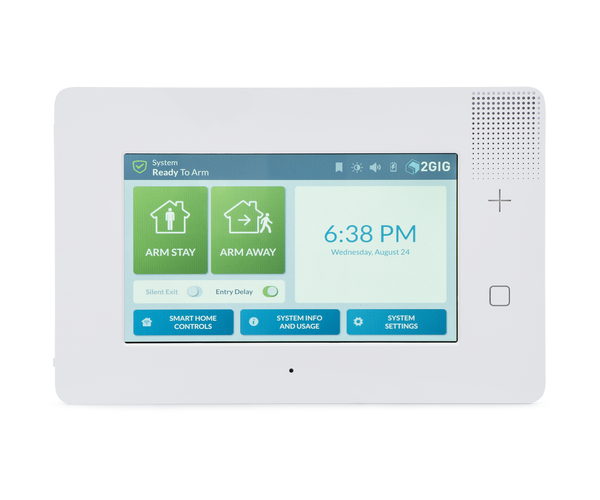Alarm.com Will Soon Require Two-Factor Authentication (2FA)
Posted By Michael GorisImportant Update: Alarm Grid has opted out of the two-factor authentication (2FA) requirement for Alarm.com. The post below was written before Alarm Grid opted out, and it was believed that 2FA would soon be required for all Alarm Grid monitored customers who receive access to Alarm.com.
Alarm Grid has received notice from Alarm.com that two-factor authentication (2FA) will soon be required for all Alarm.com users. Alarm.com is making this requirement to protect user accounts against unauthorized access. Users can set up 2FA for Alarm.com through email or text message.

At the time of this writing in late January 2021, 2FA for Alarm.com is optional, but it is recommended for keeping accounts as secure as possible. However, starting on Monday, February 15, 2021, any user who has not yet set up 2FA will be required to do so upon logging into their Alarm.com account. According to Alarm.com, the goal is to have every Alarm.com user set up with 2FA by Spring of this year.
When setting up 2FA for Alarm.com, you can choose to have codes sent via text message or email. Once the feature has been set up, you will need to perform 2FA upon logging into Alarm.com on an unsaved device. After you provide your ADC username and password, Alarm.com will send you a secret code via text or email. You must provide this secret code to verify your identity. Only then will you gain access to your Alarm.com account. Alarm.com will then allow your to "save" that device so that you don't need to perform 2FA the next time you use that device.
For most users, this will only mean performing 2FA when logging into Alarm.com through the mobile app on a new phone or through the Alarm.com website after clearing cookies. It's good that Alarm.com allows you to "save" trusted devices, as it would be very inconvenient to be required to perform 2FA every single time you go to access the Alarm.com service. However, it's a nice extra layer of protection for those times if you ever access Alarm.com through a public computer or some other computer that you don't normally use. While we are a bit surprised to see Alarm.com requiring 2FA for every user, we understand their rationale in wanting to keep accounts as secure as possible. Remember, anyone who is able to access your Alarm.com account and disarm your security system basically has full access to your property. Therefore, any extra protection is appreciated!
You can enable 2FA for your Alarm.com account at any time through the website. Simply login to your account through the website, and then select the Settings option on the left-hand side of the screen. From there, choose Login Information, and then Two-Factor Authentication. Then choose to set up the feature through text or email by following the on-screen prompts.
If you have any extra questions, or if you are interested in starting new monitoring service for use with Alarm.com, please email our team at support@alarmgrid.com. We're here to check your emails and provide support from 9am to 8pm ET M-F. We look forward to hearing from you and helping you get started with Alarm.com.

 Of the 52 publicly traded smart home automation companies followed from January 2020 to January 2021, 38 saw their stock price increase, compared with only 14 that experienced a decline in stock price across the same time frame. For comparison, a similar study of 52 smart home automation companies from the year prior reported that only 8 companies saw stock price declines in 2019, while the other 44 companies had their stock prices increase. Because of this, we can't say that the smart home industry was stronger in 2020 compared with 2019. But 2020 was still a fairly successful year. And as the economy looks to recover following the COVID-19 pandemic, we expect that things will only get better in 2021.
Of the 52 publicly traded smart home automation companies followed from January 2020 to January 2021, 38 saw their stock price increase, compared with only 14 that experienced a decline in stock price across the same time frame. For comparison, a similar study of 52 smart home automation companies from the year prior reported that only 8 companies saw stock price declines in 2019, while the other 44 companies had their stock prices increase. Because of this, we can't say that the smart home industry was stronger in 2020 compared with 2019. But 2020 was still a fairly successful year. And as the economy looks to recover following the COVID-19 pandemic, we expect that things will only get better in 2021.
 Before we give our three (3) tips to follow, let's make sure we're all on the same page by explaining what Supervision Trouble normally refers to. Supervision Trouble occurs when a
Before we give our three (3) tips to follow, let's make sure we're all on the same page by explaining what Supervision Trouble normally refers to. Supervision Trouble occurs when a 
 The Honeywell 5877 was widely seen as one of the most important automation accessories for the Lyric and LYNX Touch Systems. Thanks to this module, a user could integrate their garage door motor with their
The Honeywell 5877 was widely seen as one of the most important automation accessories for the Lyric and LYNX Touch Systems. Thanks to this module, a user could integrate their garage door motor with their 



